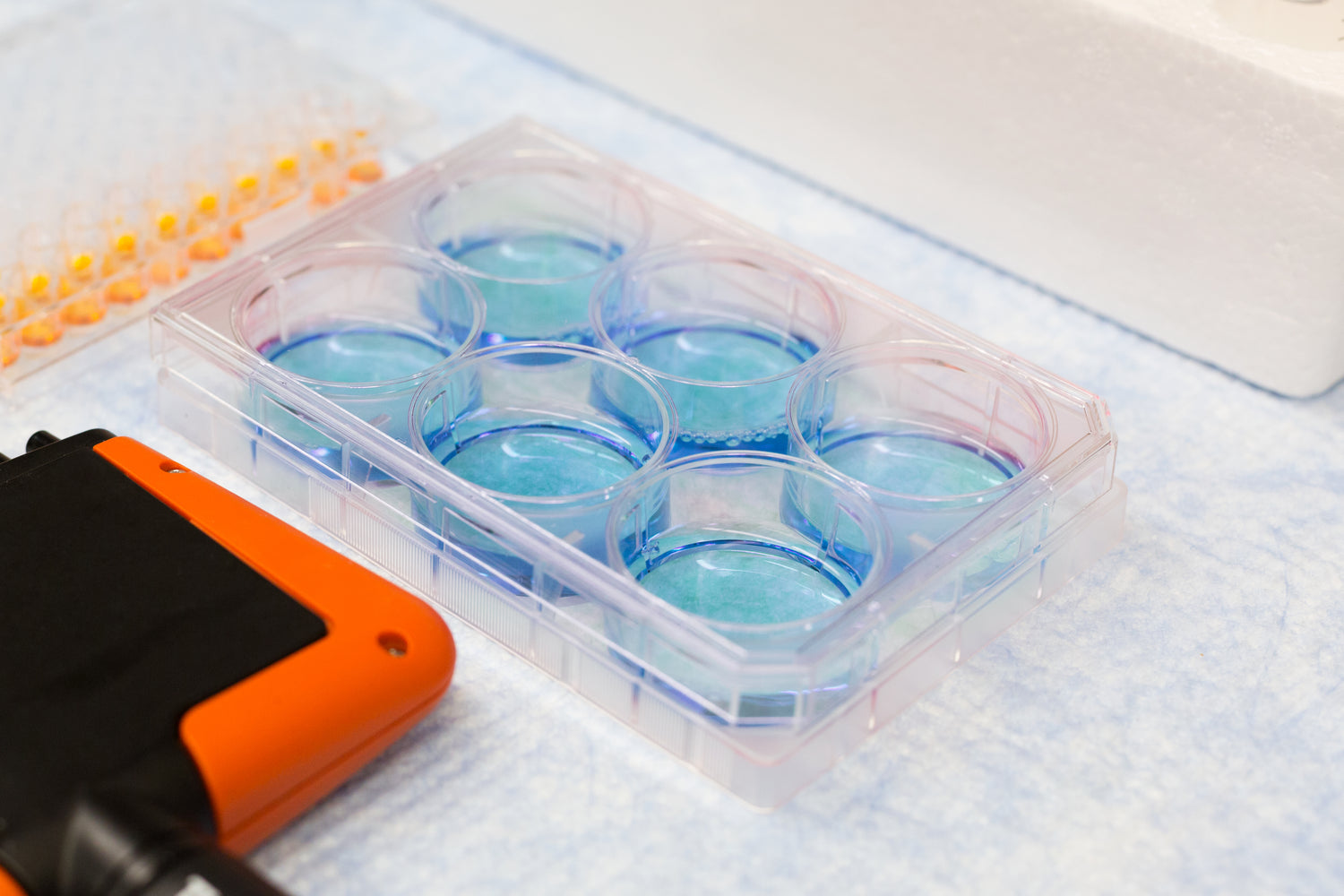EZ Test Kits
Opiates Drug Testing Kit
Opiates Drug Testing Kit
Couldn't load pickup availability
- Safe Shopping
- Discreet Shipping
- Secure Payments
 Multi-Substance Opiate Detection: Detects heroin, morphine, opiates, ecstasy-like substances, DXM, and more.
Multi-Substance Opiate Detection: Detects heroin, morphine, opiates, ecstasy-like substances, DXM, and more.
 Simple and Quick: Get results in a few minutes, comparing the colour change to the results chart provided.
Simple and Quick: Get results in a few minutes, comparing the colour change to the results chart provided.
 Testing at home: EZ Test Kits enable you to test substances in the comfort and safety of your own home.
Testing at home: EZ Test Kits enable you to test substances in the comfort and safety of your own home.
The Opiates Drug Testing Kit is a powerful tool for detecting a range of opiates and other substances, including heroin, morphine, and ecstasy-like compounds. Based on the trusted Mecke reagent test, which was one of the original tests developed by the EZ Test range. This kit allows for fast identification of various drugs in just a few simple steps.
What Does the Opiates Test Kit Detect?
What Does the Opiates Test Kit Detect?
The test is specially designed to detect a broad range of substances, including:
- Heroin and Morphine: Opiates used for pain management and for their recreational effects.
- Oxycodone: a morphinan opioid used for pain management and its recreational effects.
- Ecstasy-like compounds: MDMA, MDA, MDE, MBDB
- DXM (Dextromethorphan), a substance growing in use in the USA
- 2C-T-xx family of chemicals: psychedelic drugs of the phenethylamine class, initially developed by Alexander Shulgin
The included colour chart helps identify these substances quickly by comparing the colour change in the reagent.
How It Works
How It Works
The EZ Test Opiates Drug Testing Kit uses a chemical reagent absorbed in silica gel, held inside a glass ampoule. When a small sample is added, the reagent reacts with the substance, resulting in a color change. By comparing the color to the provided chart, users can quickly identify the substance present in the sample.
The Mecke reagent consists of selenious acid (H2SeO3) in concentrated sulphuric acid (H2SO4).
It is most commonly used as a test for opioid alkaloids, which produce a blue/green colour.
With opioid alkaloids the reagent undergoes oxidation and rearrangement.
For example, when codeine is added to the Mecke reagent a selenite ester is formed, which is then protonated. The resulting polarisation forms a ketone. Next the mixture undergoes aromatisation and protonation, forming Se(OH)2 and a blueish green ortho-quinone.
Reagent Testing
Reagent Testing
What is Reagent Testing?
Reagents are chemicals (usually acids or bases) which react in a known way to the suspected contents of a sample. All reagents sold by EZ Tests are known to change colour according to the substance that they are testing for.
Reagent testing is the process of adding an unknown material to a chemical reagent to observe the reaction that follows. It is a form of forensic chemistry which aims to rule in and out certain chemicals or groups of chemicals with various reagents until the contents is known. Reagent testing does not guarantee the presence of any particular drug or the absence of any others.
Why is Reagent Testing Important?
Illicit drugs are made, sold and (often) consumed with no quality testing or indication of what they really contain. Unfortunately, this can result in bad experiences, anxiety and serious harm. Reagent tests offer a quick and easy way to get some idea of what you may be taking.
They are not perfect, and they do not replace professional laboratory testing services, but they can be vital and may save a life.
What are the Limitations of Reagent Testing?
Reagent testing cannot guarantee that a sample contains a certain drug, and it cannot guarantee that there is no other drug present. Despite testing, it is possible that a different chemical reacted similarly to the expected reaction, causing a false positive. It is also possible that there is a drug in your sample which does not react to the reagent in question, or the second reaction is obscured by the drug you expect to find, and therefore is not found in the tests. It is always a good idea to use three or more different tests on any sample, to reduce the risk of this happening.
If you are using a purity test then it is vital that you are testing a known quantity of the drug (and that this amount is the same as the amount specified in the instructions) or else the degree of colour change will not correspond to the purity of the sample.
Storage
Storage
The ampoule in which the reagents are supplied is made out of clear glass to allow reliable identification of colour changes. To ensure that the shelf life of your reagents is as long as possible, please store them in a cool, dark place such as your fridge or cool cupboard.
Safe Disposal
Safe Disposal
After testing, please ensure that the ampoule and any leftover sample are disposed of safely to prevent contamination or harm. Proper disposal helps protect yourself and others from potential exposure to harmful substances.
If the reagent comes into contact with your skin, you should wash the affected area with soap and lukewarm water for 10-15 minutes. If the reagent comes into contact with your eyes you should adhere to the same process with lukewarm water only.
Why Choose the Opiates EZ Test Kit?
Why Choose the Opiates EZ Test Kit?
With its broad detection capabilities and trusted history, the Opiates Drug Testing Kit is an essential tool for anyone needing fast identification of opiates and related substances. Its user-friendly design and accuracy make it ideal for a wide range of applications, from personal safety to professional testing environments.
- Comprehensive Detection: Not just for opiates—this test also detects ecstasy-like substances, DXM, and more.
- Easy to Use: Four simple steps provide quick and clear results, with minimal effort required.
Share


-
IMPORTANT WARNING!
- EZ Test Kits do not provide any information about how much of a substance has been detected, and accordingly do not indicate a safe amount of the drug to take.
- The positive result for presence of one drug does not mean the absence of other (potentially more dangerous) substances.
- There is potential for technical or procedural errors. Please follow the instructions carefully.
- Other factors and substances may cause false results (either false negative or false positive results for the drug you are expecting to find). These reagents are indicative only and do not provide definitive results.
- A negative result does not rule out the presence of any drug. It may be present in quantities lower than the limit of detection, leading to an apparent negative result.
- If you are unclear of your results and would like a full analysis of the substance you have please see our article on laboratory testing.
- A positive or negative test result is NOT an indication that the substance being examined is safe to use. No drug is completely safe even if it is pure. EZ Test does not condone the use of illicit drugs.

Instructions
- Crack Open the Ampoule: Carefully open the glass ampoule included in the kit.
- Insert the Sample: Add a small portion of the substance you wish to test. For reagent testing we recommend using only a few milligrams of your sample – for example a few shavings from a pill or a few crumbs of powder. For samples absorbed onto blotter paper we recommend cutting off about an eighth of the tab to test. For liquid samples a drop or two will suffice.
- Mix the Chemicals: Place the plastic lid on the ampoule and shake well to ensure the sample fully reacts with the reagent. Make sure that the lid is secure before shaking to prevent spillage of caustic reagents.
- Compare the Colour Change: Observe the colour change compare it with the provided colour chart to identify the substance. Always perform reagent testing in bright white light and always examine the colour change against a white background.

Interpreting the results
- Opiates (Heroin, Morphine, Oxycodone): A blue/green colour will develop, indicating the presence of opiates.
- Ecstasy-Like Substances: A green product will form, which then becomes dark blue. This indicates the presence of MDMA, (or related substances such as MDE, or MBDB).
- DXM: A distinct yellow colour change will indicate the presence of DXM.
- 2C-T-xx: This family of chemicals will also produce a recognizable colour change, as outlined in the chart.
Useful Links

drug science reagent testing information
Any type of recreational drug use carries a degree of risk, both long-term and short-term. This is true for legal recreational...



